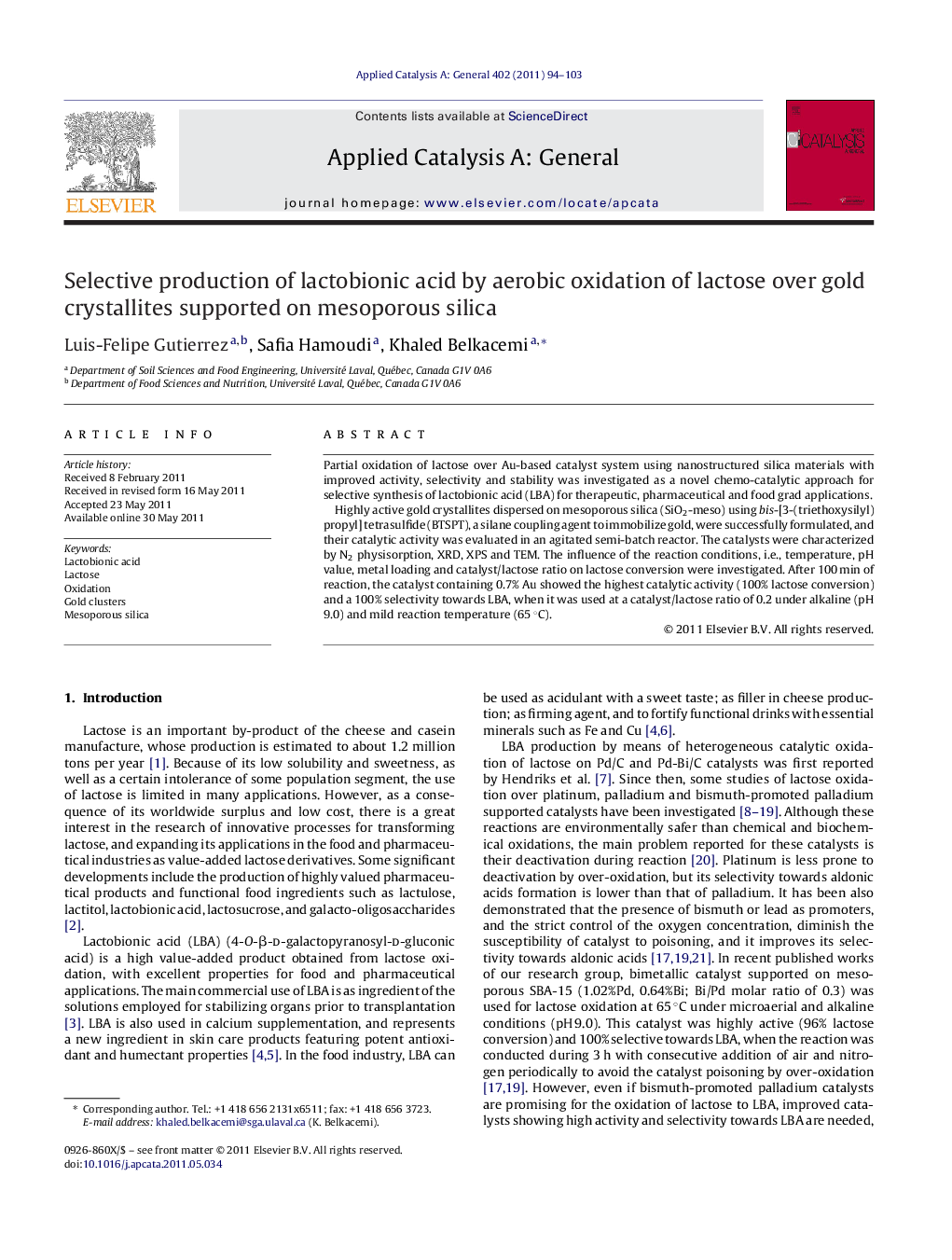| Article ID | Journal | Published Year | Pages | File Type |
|---|---|---|---|---|
| 41244 | Applied Catalysis A: General | 2011 | 10 Pages |
Partial oxidation of lactose over Au-based catalyst system using nanostructured silica materials with improved activity, selectivity and stability was investigated as a novel chemo-catalytic approach for selective synthesis of lactobionic acid (LBA) for therapeutic, pharmaceutical and food grad applications.Highly active gold crystallites dispersed on mesoporous silica (SiO2-meso) using bis-[3-(triethoxysilyl) propyl] tetrasulfide (BTSPT), a silane coupling agent to immobilize gold, were successfully formulated, and their catalytic activity was evaluated in an agitated semi-batch reactor. The catalysts were characterized by N2 physisorption, XRD, XPS and TEM. The influence of the reaction conditions, i.e., temperature, pH value, metal loading and catalyst/lactose ratio on lactose conversion were investigated. After 100 min of reaction, the catalyst containing 0.7% Au showed the highest catalytic activity (100% lactose conversion) and a 100% selectivity towards LBA, when it was used at a catalyst/lactose ratio of 0.2 under alkaline (pH 9.0) and mild reaction temperature (65 °C).
Graphical abstractFigure optionsDownload full-size imageDownload high-quality image (138 K)Download as PowerPoint slideHighlights► Highly active gold crystallites successfully dispersed on mesoporous silica (SiO2-meso). ► SiO2-meso presents a wormhole-like framework with interconnected 3D-mesopores. ► 0.7% Au/SiO2-meso is very active for lactose partial oxidation to lactobionic acid (LBA). ► 0.7% Au/SiO2-meso is 100% selective towards LBA production.
